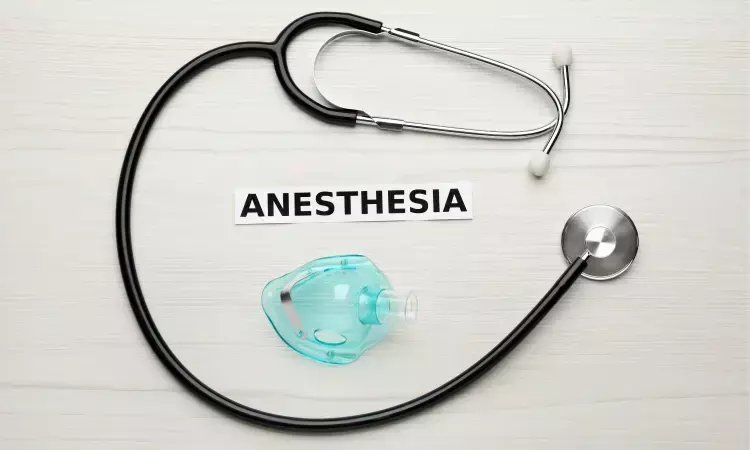- Home
- Medical news & Guidelines
- Anesthesiology
- Cardiology and CTVS
- Critical Care
- Dentistry
- Dermatology
- Diabetes and Endocrinology
- ENT
- Gastroenterology
- Medicine
- Nephrology
- Neurology
- Obstretics-Gynaecology
- Oncology
- Ophthalmology
- Orthopaedics
- Pediatrics-Neonatology
- Psychiatry
- Pulmonology
- Radiology
- Surgery
- Urology
- Laboratory Medicine
- Diet
- Nursing
- Paramedical
- Physiotherapy
- Health news
- Fact Check
- Bone Health Fact Check
- Brain Health Fact Check
- Cancer Related Fact Check
- Child Care Fact Check
- Dental and oral health fact check
- Diabetes and metabolic health fact check
- Diet and Nutrition Fact Check
- Eye and ENT Care Fact Check
- Fitness fact check
- Gut health fact check
- Heart health fact check
- Kidney health fact check
- Medical education fact check
- Men's health fact check
- Respiratory fact check
- Skin and hair care fact check
- Vaccine and Immunization fact check
- Women's health fact check
- AYUSH
- State News
- Andaman and Nicobar Islands
- Andhra Pradesh
- Arunachal Pradesh
- Assam
- Bihar
- Chandigarh
- Chattisgarh
- Dadra and Nagar Haveli
- Daman and Diu
- Delhi
- Goa
- Gujarat
- Haryana
- Himachal Pradesh
- Jammu & Kashmir
- Jharkhand
- Karnataka
- Kerala
- Ladakh
- Lakshadweep
- Madhya Pradesh
- Maharashtra
- Manipur
- Meghalaya
- Mizoram
- Nagaland
- Odisha
- Puducherry
- Punjab
- Rajasthan
- Sikkim
- Tamil Nadu
- Telangana
- Tripura
- Uttar Pradesh
- Uttrakhand
- West Bengal
- Medical Education
- Industry
Add on dexmedetomidine to epidural bupivacaine effective for postoperative analgesia in lower limb orthopedic surgery

Administering adjuvant drugs epidurally combined with local anaesthetics offers new dimensions in managing postoperative pain.
According to a recent study published in BMC Anesthesiology, the addition of either nalbuphine or dexmedetomidine to epidural bupivacaine showed effectiveness in managing postoperative analgesia pertaining to onset, duration, and patient satisfaction with the superiority of dexmedetomidine over nalbuphine.
The present study compared adding either nalbuphine or dexmedetomidine to epidural bupivacaine for postoperative pain relief after lower limb orthopaedic surgery, which was performed under combined spinal-epidural anaesthesia.
This study had 69 patients undergoing lower limb orthopedic surgery. Each patient received 15 mg of hyperbaric bupivacaine 0.5% intrathecally for anesthesia. When sensory regression reached T10, an epidural bolus of 12 ml was administered (10 ml of 0.25% bupivacaine with 2 ml of normal saline) in group C, 2 ml of nalbuphine in group N, or 2 ml of dexmedetomidine in group D. Postoperatively epidural top-up doses of 8 ml were given if VAS was ≥3 in group C, 2 ml of nalbuphine in group N, or 20 µg of dexmedetomidine in group D. The study objective was to assess the duration of postoperative analgesia, while secondary outcomes included (side effects and patient satisfaction).
Adding nalbuphine or dexmedetomidine to epidural bupivacaine provided effective postoperative analgesia. Dexmedetomidine offered faster onset, longer duration of analgesia, fewer side effects, and higher patient satisfaction, making it a better option compared to nalbuphine for postoperative analgesia in patients undergoing lower limb orthopaedic surgeries.
The study limitations include a small sample size of patients and a lack of information on available comparisons of equipotent dosing of epidural nalbuphine versus dexmedetomidine.
Reference:
Farmawy, M.S.E., Mowafy, S.M.S. & Wahdan, R.A. Epidural nalbuphine versus dexmedetomidine as adjuvants to bupivacaine in lower limb orthopedic surgeries for postoperative analgesia: a randomized controlled trial. BMC Anesthesiol 23, 401 (2023). https://doi.org/10.1186/s12871-023-02348-x
BDS, MDS in Periodontics and Implantology
Dr. Aditi Yadav is a BDS, MDS in Periodontics and Implantology. She has a clinical experience of 5 years as a laser dental surgeon. She also has a Diploma in clinical research and pharmacovigilance and is a Certified data scientist. She is currently working as a content developer in e-health services. Dr. Yadav has a keen interest in Medical Journalism and is actively involved in Medical Research writing.
Dr Kamal Kant Kohli-MBBS, DTCD- a chest specialist with more than 30 years of practice and a flair for writing clinical articles, Dr Kamal Kant Kohli joined Medical Dialogues as a Chief Editor of Medical News. Besides writing articles, as an editor, he proofreads and verifies all the medical content published on Medical Dialogues including those coming from journals, studies,medical conferences,guidelines etc. Email: drkohli@medicaldialogues.in. Contact no. 011-43720751


